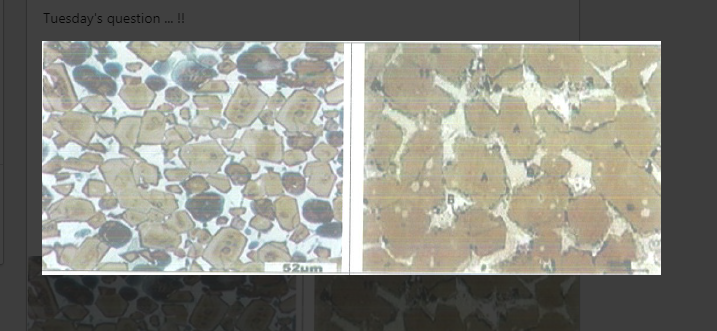Contents
What is the correct gradient for clinker cooling, so as not to negatively affect the crystals or the presence of liquid phase? by Juan Ortega

CLICK HERE NOW TO DOWNLOAD 25 MOST IMPORTANT BOOK EVER MADE IN CEMENT INDUSTRY & EXCEL SHEETS FOR OPERATION CALCULATIONS.
The images show the microscopic result of rapid clinker cooling (left) and slow cooling (right). What is the correct gradient for clinker cooling, so as not to negatively affect the crystals or the presence of liquid phase?
Answer 1

Hi Juan, One should not only think of the gradient for clinker cooling as the “quenching” process starts in the kiln behind the flame. My motto has always been that the cooler is used to reduce the temperature to be able to handle the clinker – it is not used to quench the clinker. So the following will all influence the clinker phases 1. A short sharp flame, 2. correct burner pipe position (determines the cooling or quenching rate of the clinker phases), 3. good secondary air temperature, 4. Correct cooler operation. Hope this helps. regards, Pieter
Answer 2

It is essential a rapid cooling for the quality of the clinker thus preserving its crystals ensuring satisfactory chemistry and good heat recovery, with this and necessary a good air distribution of the fans in the first compartments of Grill.
answer 3

rapid cooling is advisable for: 1. The C3S formation is a reversible reaction thereby slow cooling may result into higher free lime. 2. The clinker formation is a solid to solid reaction facilitated by viscous medium in burning zone of the kiln and the clinker should be harder than the desired standards for good grindability and evolve potential hydraulic properties expected from clinker grinding hence faster cooling is advisable. 3. If the MgO content is higher it should not be allowed to form periclase which may result into expansive cement at a later age. Faster cooling of clinker will reduce the MgO periclase.
Answer 4

Are these two clinker from the same kiln, same chemistry, same magnification? Because I think the left one shows smaller, euhedral, M3 alite, typical of a MgO-dominated chemistry while the right one is larger, subheudral, intergrown, M1 alite, typical of a more SO3-dominated chemistry. Sure there could also be cooling issues, but these clinker are probably not comparable if that was the intention.